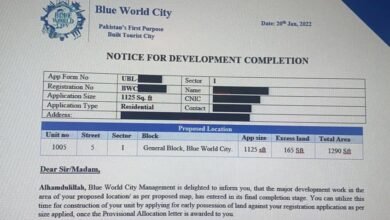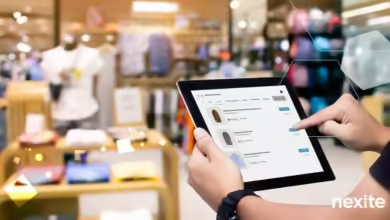Protective Packaging: Enhancing Safety, Efficiency, and Brand Value

Protective packaging plays a crucial role in ensuring that products arrive at their destination in pristine condition. This article delves into various types of protective packaging, focusing on the benefits and features of different materials such as polystyrene, polyethylene foam, and more. By understanding these materials, businesses can make informed decisions to enhance their packaging solutions.
Introduction to Protective Packaging
Protective packaging is designed to safeguard products from damage during transportation and handling. The goal is to ensure that items reach their destination without defects, which is essential for maintaining product integrity and customer satisfaction. This type of packaging not only serves as a protective barrier but also acts as a marketing tool that can influence consumer perception and brand image.
Key Aspects of Protective Packaging
Protective packaging encompasses various materials and design approaches to meet different needs. From cushioning fragile items to offering robust protection for heavy goods, each packaging solution must be tailored to the specific requirements of the product.
Types of Protective Packaging
Polystyrene Packaging
Polystyrene packaging is widely used due to its cost-effectiveness and versatility. It is an ideal choice for high-volume packaging solutions where protection from simple impacts is necessary.
- Cost-Effective and Lightweight: Polystyrene is known for being the least expensive and lightest foam material used in packaging. This makes it a popular choice for bulk packaging where cost and weight are significant factors.
- Non-Toxic and Chemically Inert: The material is non-toxic, chemically inert, and rot-proof, providing a safe and stable environment for the contents.
- Versatile Shaping: Polystyrene can be easily cut and shaped to fit various packaging needs, offering a versatile solution for different product types.
- Quick Development: With no tooling required, production can start quickly, and designs can be adapted rapidly to meet changing requirements.
Polyethylene Foam Protective Packaging
Polyethylene foam is another excellent option for protective packaging, known for its durability and shock-absorbing properties.
- Superior Cushioning: Polyethylene foam provides excellent cushioning and impact resistance, making it suitable for delicate and high-value items that require extra protection.
- Moisture and Chemical Resistance: The material is resistant to moisture, chemicals, and temperature fluctuations, which is essential for packaging products sensitive to these factors.
- Reusable and Recyclable: Polyethylene foam can be reused and recycled, aligning with growing environmental concerns and offering a sustainable packaging option.
Polyurethane Foam Packaging
Polyurethane foam is used for lighter weight products or multiple product containment. It offers a reliable protective solution while maintaining flexibility and cushioning.
- Flexible and Lightweight: Polyurethane foam is flexible and lightweight, suitable for various packaging needs where customization and adaptability are required.
- High Protection: It provides robust protection for products during transit, reducing the risk of damage from impacts or vibrations.
Nomafoam and Plastazote
Nomafoam and Plastazote are specialized foams that offer unique benefits for specific packaging applications.
- Nomafoam: Known for its resilience and range of densities, Nomafoam is ideal for cushioning and protecting products in diverse environments.
- Plastazote: Plastazote offers a superb spectrum of colors and a smooth finish, providing both protective and aesthetic advantages.
Benefits of Advanced Protective Packaging Solutions
Enhanced Product Safety
One of the primary benefits of advanced protective packaging is its ability to enhance product safety. By using materials like polystyrene and polyethylene foam, businesses can ensure that their products are protected from physical damage, moisture, and other environmental factors.
Cost-Effective Solutions
Protective packaging solutions are designed to be cost-effective, especially when purchased from a single supplier. This approach simplifies the design and procurement process, reducing overall costs and improving efficiency.
Environmental Considerations
With increasing consumer awareness about environmental issues, eco-friendly packaging solutions have gained prominence. Materials such as recycled polyethylene and biodegradable foams contribute to sustainability efforts and appeal to environmentally conscious customers.
Customization and Branding
Custom-designed protective packaging allows businesses to create unique and eye-catching designs that reflect their brand’s identity. This not only enhances the product’s appeal but also reinforces brand recognition and loyalty.
Complete Packaging Solutions
Advanced protective packaging providers offer complete solutions, including outer cartons and internal fitments. This comprehensive approach ensures that all packaging elements work together to provide optimal protection and value for money.
Read Also: How to Find a Reliable Handyman Near You
Conclusion
In summary, protective packaging is a vital component of modern product distribution, offering numerous benefits from enhanced safety to cost-effectiveness. By understanding and utilizing materials such as polystyrene, polyethylene foam, and polyurethane, businesses can tailor their packaging solutions to meet specific needs and ensure that their products arrive in excellent condition.
The role of protective packaging extends beyond mere protection; it also encompasses aspects of branding, sustainability, and overall product presentation. Investing in high-quality, customized packaging solutions not only improves the customer experience but also supports environmental and economic goals.
For businesses looking to enhance their packaging strategies, consulting with experts in protective packaging can provide valuable insights and tailored solutions. Whether opting for traditional materials or innovative eco-friendly options, the right packaging can make a significant difference in product success and brand reputation.





